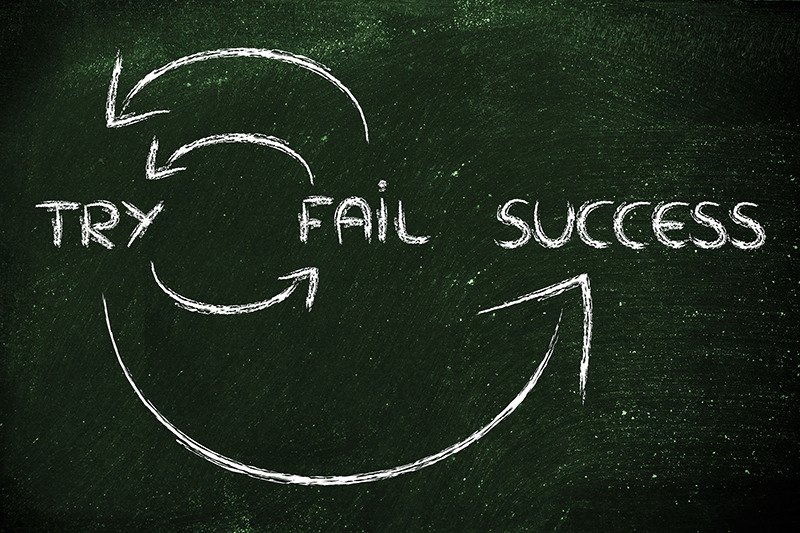Do You Want The Win, Or Do You Want The Win *Your Way*?
Adapting to obstacles and changes in the landscape is an indispensable part of any success. But sometimes entrepreneurs get stuck on winning one way.

On Bar Rescue some years back, the show helped a pirate-themed bar in downtown Pittsburgh. They had a cluster of problems, including:
- Their theme – a pirate ship galley – was inappropriate for the area, which was mostly professionals looking for a place to relax and socialize or network after work. A sort of culinary Disneyland for adults, the themed bar included not just pirate décor and lighting, but servers in full pirate get-up.
- The chef was the boyfriend of the owner/manager, and enjoyed special favor by virtue of that, which itself resulted in this person making political decisions that weren’t in the interest of the business.
- The staff was in the habit of over-pouring drinks.
- The menu was not thoughtfully put together. It included items the management and chef wanted, not what patrons wanted. The drinks were sweet island drinks and not suited for the clientele or demographic in the area. The cost margins for both the food and the drinks were bad.
- The bar suffered from low morale and high turnover.
- Lastly, the bar/owner was $800,000 in debt.
When the show revisited the establishment after some months, something few could understand had happened: the owner had reverted back to the pirate attire. Except, because they’d remodeled the bar, replacing the woodwork, lanterns and ship’s galley appearance, it was now people dressed as pirates, serving island drinks in an industrial steel and glass brewery. It was a horrible and predictable hybrid.
So the Bar Rescue team arrived and got to work. As with The Apprentice, their appeal is to be so competent and experienced they can be rude, feeding the drama. Otherwise it would be far less engaging and dramatic.
They call the shots, and everything the advisors advised makes a lot of sense.
Working with the bar owner, they began:
- Rebranding the restaurant and bar;
- Remodeling the restaurant to a minimalist, clean, industrial-professional brewery with bar and family food options;
- Changing the food menu to options more appropriate to the clientele in the area;
- Changing the drink menu to get away from island drinks, and training the bartenders and staff on proper pouring volumes. They also incorporated a state-of-the-art self-pour solution that used RFIDs given to customers, who could pour their own beer;
- Altering staff attire to black bottoms and white tops, without the pirate frills;
- Retraining the wait staff;
- Frequent meetings and cultural discussions to ‘reboot’ their low morale and toxic patterns;
- Relaunching the business with costly announcements and a big ‘grand opening’.
To wit: it no longer looked like a Disney tourist attraction situated in the Financial District of downtown Pittsburgh. They advertised and planned a grand reopening all over downtown Pittsburgh. The day came and they did record profits. The next week came, and the same thing happened: the changes were a brilliant success.
Little wonder, since – if they base a television show on your expertise revitalizing failing food and beverage businesses – you probably know what you’re doing, right?
The episode ended, and that was the end, right?
No. Customarily, later in the season, they check back with restaurateurs and bar owners they previously helped.
When the show revisited the establishment after some months, something few could understand had happened: the owner had reverted back to the pirate attire. Except, because they’d remodeled the bar, replacing the woodwork, lanterns and ship’s galley appearance, it was now people dressed as pirates, serving island drinks in an industrial steel and glass brewery. It was a horrible and predictable hybrid.
Other reversions? They had changed the menu back. They were back to drama in the kitchen, over-pouring drinks, low morale. They weren’t doing much business, again. And they were losing money, again.
How did this happen? The bar owner could not surrender the idea of winning her way. In another location, or even city (Clearwater, Florida), the original concept – the pirate-themed bar – might have been a great success.
As crazy as it sounds, we see this in marketing, more often than you can imagine. We’ll get a request to run Facebook ads, for a curtain company using revolutionary, military-grade, impossible-to-stain, curtains. They won’t want to do SEO or content. They have it in their head that they know the best way to market, so much so that they are telling experts how to execute the task of getting traffic and leads.
Or, a client will have an idea for a chain of ‘male rejuvenation centers’ or ‘spas’, and insist on using influencer marketing, which we’re not particular fans of, for reasons we can validate and explain.
They wan to win, and to win their way.
As it regards adapting, pivoting, or calling it quits: it may not be a good idea to change your core offering every time you hit an obstacle. You could have a problem of awareness, or understanding, and the market would love you as you are, if they only knew you were there.
So no, we don’t advise that you constantly be shape-shifting in the pursuit of success. In fact, we address that in another article. But if you have a winning formula, going back to something that you know doesn’t work is self-sabotage. And the combination of the winning and losing versions says something that even the losing version cannot. It screams desperation.
The take-home is: ask yourself if you are trying to get a win, or get a win in your way – which the market may not support.
[In researching this post, I learned the bar owner actually blamed the Bar Rescue show for the business closing some years later.]





